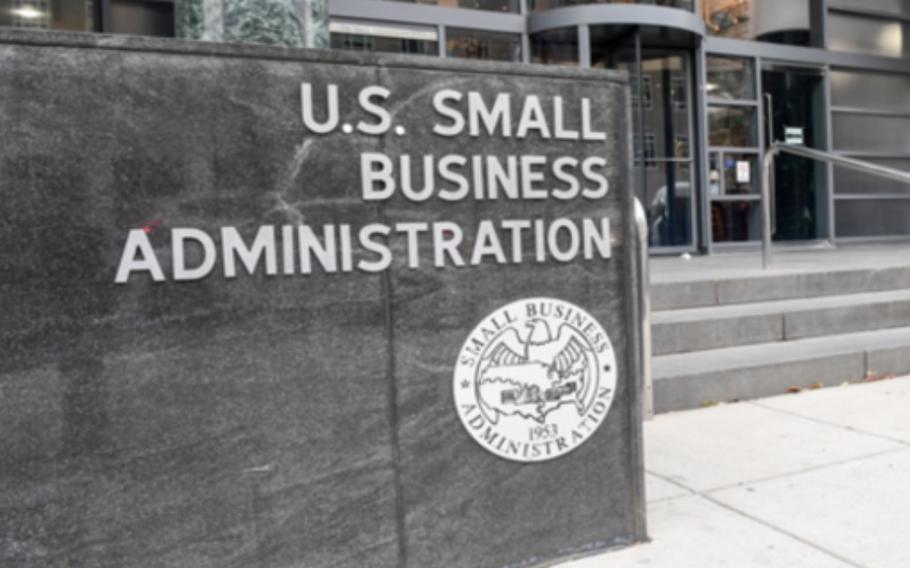
Changing demographics in the military has led to modest growth in small business ownership for women and minorities who are veterans. (Small Business Administration)
WASHINGTON – As a graying workforce of veterans who own small businesses in America retires, fewer younger veterans are stepping up to replace them, according to the Small Business Administration.
There are nearly 2 million veteran-owned small businesses across the United States that provide an annual payroll of $256 billion and employ 5.5 million workers, administration officials said.
But veteran-owned small businesses are on a steady decline, dropping by more than a half in a decade. They also represent a dwindling share of the nation’s small businesses – decreasing from 11% in 2014 to just more than 5% in 2021, the SBA said.
Ownership is concentrated among older workers who are aging out of the workforce. More than half of veteran business owners were 65 and older, while less than 10% were younger than 45, according to an SBA study published in May 2023.
Contributing to the decline is a lack of access to capital – money to invest in starting and growing a business, according to a December 2023 report by the Government Accountability Office that looked at resources for veteran business owners.
Veterans reported conventional banks and lenders were sometimes unfamiliar with their business model and did not understand how their military service represented work experience, according to the GAO.
“I am stepping away. I needed a 9-to-5 job to be home with our son as my wife attended college,” 37-year-old Mike Wood of Colorado said about his reasons for ending his carpentry business in 2023. He could not afford to keep it running.
“There was too much financial uncertainty, and the people I hired did not have the work ethic I did as a former Marine,” Wood said.
Post-9/11 veteran business owners such as Wood, who served from 2006-2011, are more likely to experience “acute financing shortfalls” and have lower credit approval rates than their nonveteran peers, according to the SBA.
More than half of veteran business owners who took part in the Federal Reserve’s 2022 Small Business Credit Survey described their financial situations as poor or fair even though they considered their credit as strong.
Veterans often encounter obstacles to raising money, according to the GAO. Challenges include establishing credit and forming lasting business relationships, especially if they are new to a community after leaving the military.
Veterans interviewed for the GAO report said they faced cumbersome requirements on credit applications and long waits for approval.
Darrin Pruitt, 57, owns Pirate Island Events of Maryland, which produces live concerts and festivals. Pruitt has run three small businesses since leaving the Navy in 1996. Pruitt said raising capital has been a significant issue and sometimes a barrier, especially when he first left the service.
“People on the outside don’t understand what we did on the inside,” he said. “Military veterans don’t have the references and credentials civilians recognize. For example, when trying to get credit, you get asked why you have had so many addresses.”
But the SBA is working to smooth the lending process for veteran business owners. The number of loans to veteran-owned business increased by 33% in 2023 and loan dollars rose by nearly 40%, after declines from 2016-2020.
The SBA backed 2,800 loans to veteran-owned businesses, totaling $1.2 billion, in fiscal 2023. Changing demographics in the military are having a positive impact on business ownership as armed forces personnel exit the military. There is modest growth in ownership among veterans who are women and minorities, the SBA reported.
Business ownership among women rose by 5% from 2017 to 2021, and minority-owned businesses increased 3%, according to SBA figures.
The SBA in fiscal 2023 “increased services to our veterans and active-duty service members and their families through multiple programs enabling them to start, grow and expand their businesses,” an SBA spokesman said. “SBA continues to increase outreach to all service-disabled, veteran-owned, and military spouse-owned small businesses by counseling, training and federal contracting certification.”
To reach more veterans, the SBA expanded the number of veteran business outreach centers in 2023 to 28 locations. The regional hubs provide education, training and support.
More than 50,000 participants received training and assistance at the centers in fiscal 2023. The centers enabled 352 veterans and spouses to start new businesses, according to the SBA.
Organized as a “one-stop shops,” the centers offer business training, counseling and resource referrals for transitioning service members, veterans, National Guard and Reserve members and military spouses starting or growing a small business, said Timothy Green, acting associate administrator for the Office of Veterans Business Development.
Veteran-owned businesses overall received 2% to 5% of loans through SBA-administered programs from 2016-2021 when seeking capital to fund small businesses, according to the GAO report.
The SBA “must give special consideration to veterans for its lending programs. But the agency hasn’t developed policies and procedures to do so,” the GAO report concluded. “For example, SBA committed to processing applications for veteran-owned businesses promptly. However, it doesn’t define what ‘promptly’ means... We recommend SBA establish specific procedure to ensure veterans are given special consideration.”
The SBA administers three primary loan programs for small businesses. The loans give entrepreneurs access to commercial lenders, assist with financing for fixed assets such as buildings, and provide “microloans” of up to $50,000 for technical assistance, among other areas. SBA resources include the Boots to Business education program offered in communities and at military bases.
Boots to Business is an entrepreneurial educational and training initiative offered as part of the Defense Department’s transition assistance program, known as TAP. It provides an overview of business ownership.
There also is SBA-funded training for disabled veterans, as well as small business support for spouses of military veterans.